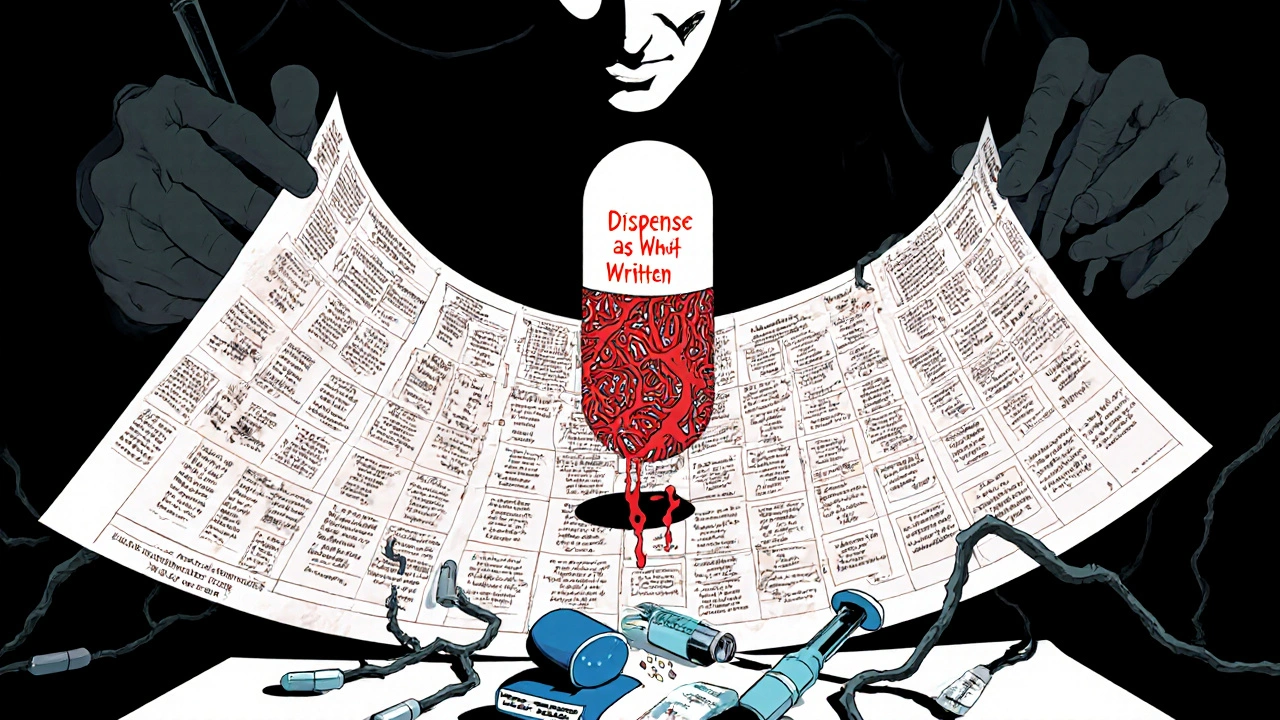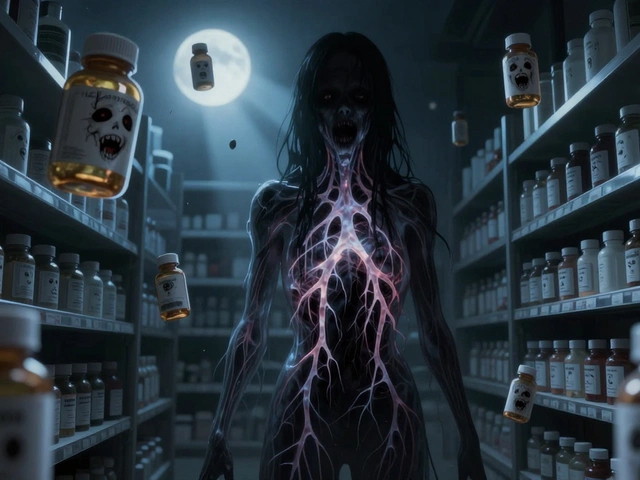When Your Pharmacy Gives You a Different Pill
You walk into the pharmacy to pick up your blood pressure medicine. The bottle looks different. The pill is white instead of blue. It says a completely different name on the label. Your heart drops. Did they give you the wrong medicine? Or worse - did they give you something that doesn’t work?
This happens to millions of Americans every year. And most of the time, it’s completely normal. What you’re holding is a generic drug - a legally approved, scientifically proven copy of your brand-name medication. The FDA requires it to work exactly the same way in your body. But that doesn’t mean switching is always simple. There are real differences you need to know about - and steps you should take to stay safe.
Why Generics Are So Much Cheaper
Brand-name drugs cost a lot because the company that invented them spent years and millions of dollars on research, clinical trials, and marketing. Once their patent runs out - usually after 20 years - other companies can make the same drug. They don’t have to repeat expensive trials. They just need to prove their version works the same.
The result? A generic drug costs 80% to 85% less than the brand. For example, if your brand-name cholesterol pill costs $350 a month, the generic might cost $15. That’s not a discount. That’s a life-changing difference. According to CMS data, patients save an average of $378 per prescription each year by switching to generics. For people on multiple medications, that adds up to thousands.
And it’s not just about savings. A 2023 GoodRx report found that 87% of patients who switched to generics improved their medication adherence because they could actually afford to take it. Maria Rodriguez from Phoenix told ABC15, “I was skipping doses because the brand cost $350 a month. The generic costs $15 and works exactly the same.”
What’s the Same - And What’s Not
By law, a generic drug must contain the same active ingredient, strength, dosage form, and route of administration as the brand. That means if your brand pill is a 20mg tablet taken by mouth, the generic is too. The FDA requires it to deliver the same amount of medicine into your bloodstream at the same rate. That’s called bioequivalence - and it’s not a guess. It’s tested with real blood samples from volunteers.
But here’s where people get confused: the pill can look different. Color, shape, size, even the imprint on the tablet - all of that can change. Why? Because trademark laws forbid generics from looking exactly like the brand. So your blue, oval pill becomes a white, round one. That’s legal. That’s normal. But it can cause mistakes.
A 2022 case in the Patient Safety Reporting System involved an 82-year-old woman who accidentally took double her dose because the new generic looked nothing like her old pill. She didn’t recognize it. She thought she hadn’t taken it yet. That’s why counseling matters.

When Generics Might Not Work the Same
For most people, switching to a generic is seamless. A 2019 study in JAMA Internal Medicine reviewed over 2,000 clinical trials and found generics performed identically to brand drugs in 88% of cases.
But there are exceptions. The FDA calls them narrow therapeutic index (NTI) drugs. These are medications where even tiny changes in blood levels can cause big problems - too little and the drug doesn’t work; too much and it becomes toxic.
Examples include:
- Levothyroxine (for thyroid disease)
- Warfarin (a blood thinner)
- Phenytoin and carbamazepine (for seizures)
The American Epilepsy Society found that 12.7% of patients switching between generic versions of seizure meds had breakthrough seizures - compared to just 4.3% who stayed on the same formulation. That’s why many neurologists recommend sticking with one manufacturer’s generic - or even the brand - if it’s working well.
Dr. Robert Graham, a neurologist at Cedars-Sinai, says: “For certain antiseizure medications, we sometimes see patients who do better on one manufacturer’s generic than another. That’s why consistency matters.”
What’s in the Pill (Besides the Medicine)
The active ingredient is the same. But the rest? Not always.
Generics can use different fillers, binders, dyes, and preservatives. These are called inactive ingredients. They don’t treat your condition - but they can cause reactions in some people.
If you’re allergic to red dye, a generic version of your pill might contain it. Your brand version didn’t. That’s why you need to check the label. The FDA requires manufacturers to list inactive ingredients on the Patient Package Insert (PPI), but many patients never read it. A 2022 University of Michigan study found only 37% of generic drug labels clearly identified potential allergens.
Also, some complex delivery systems - like inhalers, patches, or extended-release tablets - are harder to copy exactly. In 2020, the FDA warned that some generic versions of Advair Diskus didn’t disperse the powder the same way, which could affect how much medicine reached the lungs.
What You Should Do When Switching
Switching to a generic isn’t something you should just accept without asking questions. Here’s what to do:
- Ask your pharmacist - “Is this a generic? What’s the brand name?” They’re required to explain the switch.
- Check the appearance - Write down the color, shape, and imprint of your old pill. Compare it to the new one. If it looks completely different, ask why.
- Read the label - Look for the list of inactive ingredients. If you have allergies, check for dyes, gluten, or lactose.
- Track your symptoms - For the first two weeks after switching, keep a simple log. Are your blood pressure numbers staying steady? Are you having more headaches? Feeling more anxious? For diabetes, track fasting glucose. For blood thinners, check INR levels. For depression or anxiety, use a quick scale like PHQ-9 or GAD-7.
- Call your doctor if something feels off - Not every change is serious. But if you notice new side effects or reduced effectiveness, don’t wait. Call your provider. They may need to switch you back - or to a different generic.
Pharmacists are required to offer a 5-7 minute counseling session when substituting a generic, thanks to the 2019 Model State Pharmacy Act adopted by 42 states. Use that time. Ask questions. Write things down.

When You Should Stay on the Brand
It’s not always better to switch. Sometimes, staying on the brand is the safest choice.
If you’ve been on the same brand for years and it’s working perfectly - no side effects, stable lab results, no issues - there’s no medical reason to change. Your doctor can write “Dispense as Written” or “Do Not Substitute” on the prescription. Insurance may still cover it, especially if you’re on Medicare Part D.
Also, if you’ve had a bad reaction to a generic before - even if it was years ago - tell your doctor. Some people are sensitive to certain fillers or coatings. That’s not rare. It’s just underreported.
And for complex medications - like those for cancer, rare diseases, or biologics - generics are often not available yet. In oncology, 97% of prescriptions are still brand-name. The same goes for treatments for rare conditions. That’s because these drugs are harder to copy. But that’s changing. In January 2024, the first biosimilars for Humira (adalimumab) hit the U.S. market, offering 15-30% savings.
What’s Changing in 2025 and Beyond
The FDA is pushing for better labeling. By 2025, all generic drug labels must clearly list inactive ingredients - including allergens - in plain language. That’s thanks to the 2023 FDA Safety and Innovation Act.
Also, starting in 2024, Medicare will cover all FDA-approved generics without prior authorization. That means no more delays or paperwork just to get your cheap pills.
And more generics are coming. IQVIA predicts over 200 new generic approvals in 2024 alone, including copies of expensive drugs like Humira, Xarelto, and Eliquis. That means more savings ahead.
But the biggest trend? More patients are choosing generics - and staying on them. Kaiser Permanente found that diabetic patients on generic metformin had a 78% adherence rate, compared to just 63% for those on the brand-name Glucophage. When cost drops, people take their medicine.
Final Thoughts
Switching from brand to generic isn’t a gamble. It’s a smart, safe move for most people. The science is clear: generics work. The data is clear: they save money. The FDA is clear: they’re held to the same standards.
But safety isn’t just about science. It’s about awareness. It’s about knowing your pill, knowing your body, and speaking up when something feels wrong. Don’t assume the pharmacist knows your history. Don’t assume the label says everything you need to know. Take a moment. Ask questions. Keep a record.
Generics aren’t second-rate. They’re the reason millions of Americans can afford to stay healthy. But you still have to be your own best advocate.
Are generic drugs as effective as brand-name drugs?
Yes, for most medications, generic drugs are just as effective. The FDA requires them to have the same active ingredient, strength, dosage form, and bioequivalence as the brand-name version. A 2019 JAMA study of over 2,000 trials found generics performed identically in 88% of cases. However, for narrow therapeutic index drugs like warfarin, levothyroxine, or seizure medications, small differences in absorption can matter - so consistency in manufacturer matters.
Why do generic pills look different?
Trademark laws require generic drugs to look different from the brand-name version. That means changes in color, shape, size, or imprint. The active ingredient is the same, but the inactive ingredients (like dyes or coatings) may differ. This is legal and normal - but it can cause confusion. Always check the label and ask your pharmacist if you’re unsure.
Can I switch back to the brand if the generic doesn’t work?
Yes. If you notice reduced effectiveness, new side effects, or changes in how you feel after switching, contact your doctor. They can write “Dispense as Written” or “Do Not Substitute” on your prescription. Insurance may still cover the brand if there’s a documented medical reason. Keep a symptom log to help your doctor understand what’s changed.
Are there any ingredients in generics that could cause allergies?
Yes. While the active ingredient is the same, generics can use different inactive ingredients - like dyes, gluten, lactose, or preservatives - that may trigger allergies. The FDA requires these to be listed on the Patient Package Insert, but many labels are unclear. If you have known allergies, always check the full ingredient list. If unsure, ask your pharmacist to verify.
What should I monitor after switching to a generic?
For two weeks after switching, track changes in your symptoms or lab results. For blood pressure or diabetes meds, monitor readings daily. For blood thinners like warfarin, check INR levels. For antidepressants or anti-anxiety meds, use a quick scale like PHQ-9 or GAD-7. If you notice significant changes - like blood sugar jumping over 20 mg/dL or INR shifting more than 0.5 units - contact your doctor. Keep a written log.
Is it safe to switch between different generic manufacturers?
For most drugs, yes. But for narrow therapeutic index medications - like seizure drugs or thyroid hormone - switching between different generic manufacturers can cause problems. Some patients respond better to one manufacturer’s version than another. If you’re on one of these drugs and you feel different after switching manufacturers, tell your doctor. They may recommend sticking with the same brand or manufacturer.
Why do some doctors prefer brand-name drugs?
Some doctors prefer brands out of habit, or because they’ve seen patients have issues after switching - especially with NTI drugs. Others may not be fully aware of the FDA’s rigorous testing standards. But most doctors now support generics when appropriate. The 2022 AMA National Physician Survey found 78% of physicians automatically prescribe generics when available. If your doctor insists on the brand, ask why - and whether it’s based on evidence or preference.






11 Comments
Julie Roe
November 17, 2025 AT 00:43 AMHey everyone, I just want to say how glad I am that this post exists. I used to be terrified of generics because my grandma swore the blue pill was the only thing that kept her BP stable. But after switching to generic lisinopril last year? Same numbers, same energy, and $300 less out of pocket. I started sharing my log with my mom and now she’s on it too. It’s not magic - it’s math. And if you’re worried about the look? Write down the old pill’s details. Take a pic. Keep it in your phone. Small habits, big savings.
Rob Goldstein
November 17, 2025 AT 04:52 AMAs a pharmacist for 18 years, I can tell you this: the FDA’s bioequivalence standards are brutal. We test generics in real people, measure blood levels at 12+ time points, and the AUC and Cmax have to be within 80-125% of the brand. That’s not ‘close enough’ - that’s clinically identical. The only time I’ve seen real issues? When patients switch between different generic manufacturers of levothyroxine. Consistency > cost in that case. And yes - the dye in the generic might be FD&C Red No. 40. If you’re allergic, ask for the ‘dye-free’ version. They exist. Just don’t assume the pharmacist knows your allergy history. Tell them.
Margo Utomo
November 18, 2025 AT 02:51 AMGenerics are the unsung heroes of American healthcare. 🙌 I used to skip my antidepressants because the brand cost $400/month. Generic? $12. I didn’t just survive - I started hiking again. The pill looks like a Tic Tac now, but my mood hasn’t changed. If you’re scared, track your symptoms for 14 days. If nothing’s off? Congrats. You just saved your future self a ton of cash. And no, the FDA didn’t cut corners. They just stopped letting Big Pharma charge for a logo.
Sylvia Clarke
November 19, 2025 AT 18:32 PMIt’s fascinating how the same science that allows generics to be cheaper also makes them so rigorously regulated. The fact that a $15 pill must match a $350 one in dissolution rate, plasma concentration, and therapeutic outcome speaks volumes about how broken the pharmaceutical pricing model is - not the generic system. I once had a patient cry because she thought the white pill was ‘fake.’ We spent 20 minutes comparing the imprint: ‘E 10’ on the generic versus ‘BP 20’ on the brand. Same drug. Different design. Different fear. The real villain isn’t the pill. It’s the marketing that made us think color = quality.
mike tallent
November 20, 2025 AT 11:27 AMMy dad’s on warfarin. We switched him to a generic and his INR spiked to 5.2. Scary stuff. Turned out it was a different manufacturer - he’d been on the same one for 5 years. We called his cardiologist, switched back, and now he’s stable. Point is: for NTI drugs, stick with one maker. Don’t let the pharmacy auto-substitute. Say ‘NO SUBSTITUTION’ on the script. And yes, I’m the guy who prints out the pill images and tapes them to his fridge. #GenericSafety
Matt Wells
November 21, 2025 AT 15:57 PMThe notion that generics are somehow ‘inferior’ is a profound misapprehension of pharmacological regulation. The FDA’s ANDA process mandates not merely chemical equivalence, but pharmacokinetic parity - a standard far exceeding that of many over-the-counter supplements. The variance in appearance is a consequence of trademark law, not pharmacological compromise. To conflate aesthetic dissimilarity with therapeutic inadequacy is to indulge in a form of placebo-driven irrationality. The data is unequivocal. The fear is not.
John Wayne
November 23, 2025 AT 11:13 AMLet’s be real - generics are a government scam. The FDA’s ‘bioequivalence’ is just a fancy word for ‘close enough for the average dumbass.’ My cousin took a generic seizure med and had a full-on convulsion. The brand? Perfect. The generic? A placebo with a different color. And don’t even get me started on the ‘inactive ingredients.’ I bet 70% of ‘allergic reactions’ are just people panicking because the pill looks weird. The system’s rigged to push generics so the insurance companies don’t have to pay. It’s not science. It’s cost-cutting with a lab coat.
Jennifer Howard
November 24, 2025 AT 03:12 AMAs a former FDA inspector, I must say: this article is dangerously misleading. The bioequivalence standards are not as stringent as the public believes. In fact, the FDA allows up to a 25% variance in absorption rates - which, for patients on narrow-therapeutic-index drugs, is a death sentence waiting to happen. And the labeling? Absurd. The inactive ingredients are listed in 5-point font on a page no one reads. This is not patient safety - it’s regulatory negligence. If you are not on the brand-name, you are gambling with your life. I have seen the reports. I have signed the forms. Do not be fooled.
George Gaitara
November 25, 2025 AT 00:29 AMWait - so you’re telling me I can’t trust my medicine anymore? I’ve been taking this blue pill for 12 years. Now it’s white? What’s next? They’ll switch the active ingredient and call it ‘generic plus.’ I bet the generic has talc from China and the brand has pure cornstarch from Vermont. This is why I don’t trust pharmacies. I’ve been calling my doctor every time I get a refill. I don’t care if it costs $300. I want the blue one. My body knows it. And if the government wants me to take a white pill, they should at least give me a free therapist to deal with the trauma.
Abdul Mubeen
November 25, 2025 AT 15:48 PMHave you considered that generics are part of a larger pharmaceutical consolidation strategy? The same corporations that make the brand-name drugs also own the generic manufacturers. The FDA is complicit. The ‘cost savings’ are a distraction. The real goal is to eliminate competition and lock patients into a single supply chain. I’ve seen the corporate filings. The same parent company owns Pfizer, Teva, and Mylan. This isn’t about affordability. It’s about control. The white pill is a Trojan horse.
Deepali Singh
November 27, 2025 AT 00:09 AMGeneric drugs are statistically equivalent in 88% of cases. The remaining 12% are outliers - often patients with polypharmacy, poor adherence, or undiagnosed metabolic variations. The data does not support widespread fear. The emotional response is disproportionate to the risk profile. Your anxiety is not a clinical indicator.